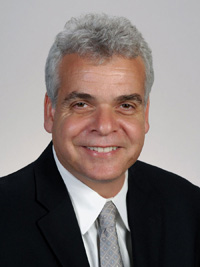Professor Paul R. Sanberg
The EurekAlert! article Umbilical cord blood-derived stem cells given intravenously reduce stroke damage said
“Stem cells taken from umbilical cord blood, then given intravenously along with a drug known to temporarily breach the brain’s protective barrier, can dramatically reduce stroke size and damage, Medical College of Georgia and University of South Florida researchers say.‘This is an important finding because it shows that umbilical cord blood cells do not have to become new brain cells to protect the brain,’ says Dr. Paul R. Sanberg, neuroscientist at the University of South Florida and a co-author on the study. Human umbilical cord blood stem cells used for the study were obtained from Saneron CCEL Therapeutics, Inc., in Tampa, Florida, a USF spin-off company researching clinical applications for cord blood cells.
By using mannitol or similar drugs, it may be possible to treat stroke patients in the future with cells from only a few umbilical cords, adds Dr. Sanberg.”
Paul R. Sanberg, Ph.D., D.Sc. is is Distinguished University Professor and Director of the Center of Excellence for Aging and Brain Repair and Associate Vice President/Associate Dean for Biotechnology Development at the University Of South Florida College Of Medicine. He trained at York University, the University of British Columbia, the Australian National University and at the Johns Hopkins University School of Medicine. He has held academic positions at the Ohio University, the University of Cincinnati, and Brown University.
Paul is Editor-in-Chief of Cell Transplantation, Executive Director of the American Society for Neural Transplantation and Repair, and past president of the Cell Transplant Society. He is Associate Editor of Stem Cells and Development. He is the author of more than 400 scientific articles and has published thirteen books including, Neural Stem Cells: Methods and Protocols and Neural Stem Cells for Brain and Spinal Cord Repair, and is an inventor on over twenty-five U.S. patents. His work is pioneering an understanding in the role for stem cells in neurological disorders.
Paul coedited Immunosuppressant Analogs in Neuroprotection, Mitochondrial Inhibitors and Neurodegenerative Disorders, Central Nervous System Diseases: Innovative Animal Models from Lab to Clinic, Measuring Movement and Locomotion: From Invertebrates to Humans, Cell Therapy, Stem Cells and Brain Repair, Motor Activity & Movement Disorders: Research Issues and Applications, Cell Transplantation for Huntington’s Disease, and coauthored Neuropathological Evidence of Graft Survival and Striatal Reinnervation after the Transplantation of Fetal Mesencephalic Tissue in a Patient with Parkinson’s Disease and Intravenous Administration of Human Umbilical Cord Blood Reduces Behavioral Deficits After Stroke in Rats.
His patents include Human Cord Blood as a Source of Neural Tissue Repair of the Brain and Spinal Cord, Exo-S-Mecamylamine Formulation and Use in Treatment, Combined effects of nutrients on proliferation of stem cells, Bone marrow-derived neuronal cells, Method of potentiating inflammatory and immune modulation for cell and drug therapy, Cholinergic modulation of microglial activation via alpha-7 nicotinic receptors, Cellular delivery of natriuretic peptides, Method of treating cognitive deficits in learning and memory, Cerebral Intraventricular Transplantation as Method of Treating Amyotrophic Lateral Sclerosis (ALS), and Implantable biocompatible immunoisolatory vehicle for delivery of selected therapeutic products.
Paul studied biology at York University in Toronto, then attended the University of British Columbia to study medical sciences. He earned his Ph.D. in Neurological Science at the Australian National University in 1981 and his D.Sc. at the Australian National University in 1998.
